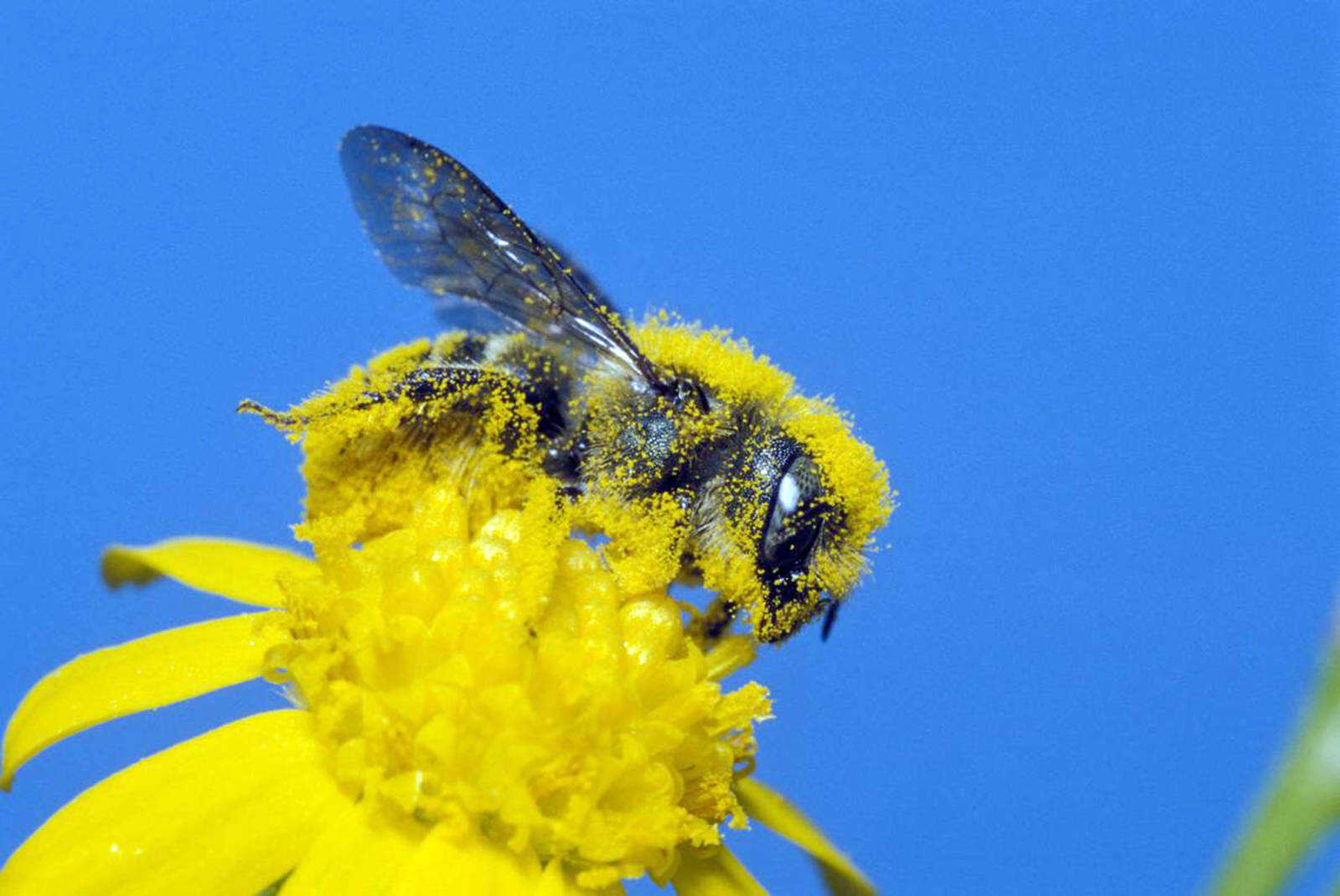Plan bee: Officials urge planting of native flowers, grasses to protect bee population
Bees should be welcomed into yards and protected from lawn mowers this time of year — not swatted — according to the Missouri Department of Conservation. Bees pollinate 75% of all plants producing food for human consumption and the population is dwindling...
Bees should be welcomed into yards and protected from lawn mowers this time of year — not swatted — according to the Missouri Department of Conservation. Bees pollinate 75% of all plants producing food for human consumption and the population is dwindling.
According to information provided by the MDC, scientists believe the loss of native bees’ habitat may be the key to their decline. Bees use many of the same habitats as bobwhite quail, rabbits and grassland songbirds — which also are declining in the Midwest. The MDC is encouraging people to plant native plants and flowers beneficial to bees.
With a life span of about one year, the winged pollinators emerge in the spring as adults, making their way to flowers and building nests. During the winter months, they hibernate.
Cape Girardeau Conservation Nature Center naturalist Angela Pierce said nearly 450 species of bees exist in Missouri — “and a lot of them are teeny tiny,” she added.
Identifying bees
Pierce said most species can be easily identified, primarily by size and color.
They come in all colors, she said, including blue, green, yellow and black, all black, and black and white.
Fertilization techniques also can vary. Bumblebees, for example, use the “buzz pollination” technique, she said.
“Just the size of their wings and bodies is going to create a pollination technique that some flowers specifically have to have,” Pierce said, adding tomato plants depend on the method.
Since smaller bees are able to fit into smaller spaces, she said, they’re going to get the pollen all over their bodies before traveling into another flower.
And because of the way some flowers are structured, Pierce said, they may require pollen to be “shaken up” by the bee.
How to help
Pierce advises leaving dead trees and shrubbery during winter months and to abstain from mowing, if possible, during spring and summer to encourage bee population growth.
“What may look ugly for us is actually a home for bees through the winter,” she said. “A lot of the [queen bees] will overwinter in either dead stems or underground. So cutting down some of the dead plants can actually disturb them.”
Many species, including bumblebees, make their nests underground, she said. Bumblebees like open spaces to have nests, so they tend to be found in yards.
And others — such as leafcutter and mason bees — will build homes in small cavities within wood or plant stems.
“Nice, pristine green lawns” with only one type of grass growing aren’t good habitats for bees, she said.
If you want to promote bees in your backyard, Pierce said, consider planting at least 25 native perennials, including grayhead coneflower, golden Alexanders, leadplant and purple prairie clover.
She also encourages people to allow grassy areas to overgrow and use native flower seeds to fill those spaces, “and let it go back to a prairie-like habitat.”
“You don’t have to have a massive yard to help bees. Any natives that you plant are going to be of help,” she said. “ ... You don’t have to turn your entire yard into a wild prairie, but there are little things you can do.”
jhartwig@semissourian.com
(573) 388-3632
Connect with the Southeast Missourian Newsroom:
For corrections to this story or other insights for the editor, click here. To submit a letter to the editor, click here. To learn about the Southeast Missourian’s AI Policy, click here.









